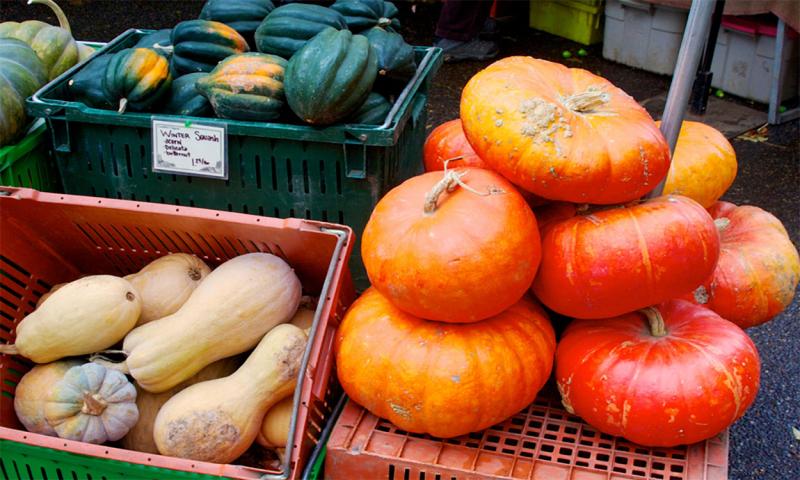
Written by Rhoda Burrows, former Professor & SDSU Extension Horticulture Specialist.
The gardening season will soon come to an end, but we can still enjoy the fruit of our labor for months ahead if we take some extra care in harvesting and storage. Pumpkins and winter squash are two vegetables that can last well into the winter with attention to the following practices.
Harvest Tips: When to pick
Pumpkins and squash are warm-season crops that are sensitive to temperatures below 45 degrees Fahrenheit, and they should be harvested before frost. The fruit can withstand brief exposure to cooler temperatures, even down to 35 degrees Fahrenheit, as long as they are exposed to warmer temperatures (around room temperature) soon afterwards, which will help reverse some of the chilling injury.
For optimal storage life, pumpkins and winter squash should be left on the vine until the fruit are fully mature. However, the definition of maturity varies depending on the type of squash, and, in some cases, it can be quite difficult to know the optimal time to harvest. Death of the vines doesn’t necessarily indicate that a squash is mature enough for successful storage, especially if disease or drought has been a factor.
The traditional advice is to wait until the rinds are hard enough that they cannot be easily punctured by a fingernail. This works for many, but not all types of squash and pumpkins. A better, or at least equally good, indicator of ripeness can be stem “corking.” This is the loss of green and the development of brown, woody stripes on the stem where it joins the fruit (Figure 1).
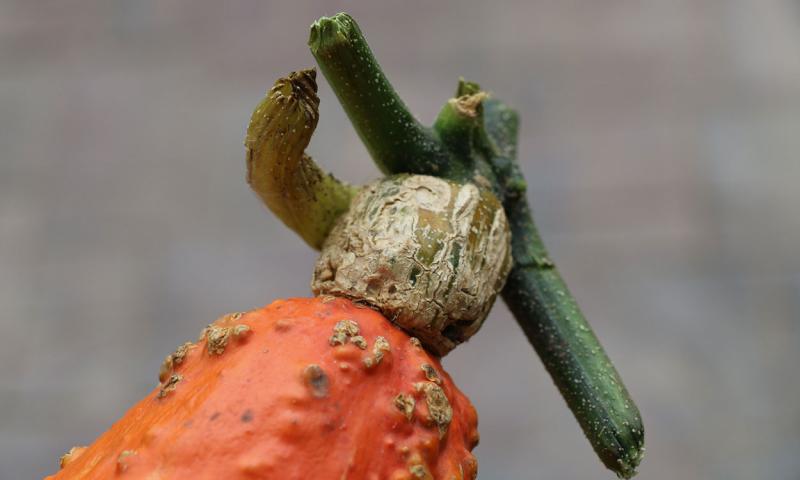
The stem may also shrink a bit. This indicates the fruit is beginning to separate itself from the vine and is no longer receiving much energy from the plant; this occurs as the rind begins to harden.
Fruit left on the vine after the stem begins to cork will have no better quality or storage life than fruit that is harvested at this stage, and it may be more susceptible to rots.
What about color changes?
For ornamental pumpkins, the change in rind color from green to orange can be a useful indicator of ripeness. Acorn (Figure 2) and kabocha (Figure 3) squash can be harvested when their ground spot (the part of the fruit laying on the ground) turns a dark-orange color, although some research indicates they can be harvested even sooner without loss of quality and may be more resistant to storage diseases. For certain, in winter squash, the color change is too early to be a good indicator of maturity.
Butternut squash (Figure 4), for example, turn their characteristic mature tan color some two-to-three weeks before they should be harvested for best quality. If harvested too early, the developing seed inside butternut squash will utilize nutrients stored in the flesh to mature, decreasing its eating quality. Another clue that the fruit is ready to mature is that the rind will become less glossy.
Acorn
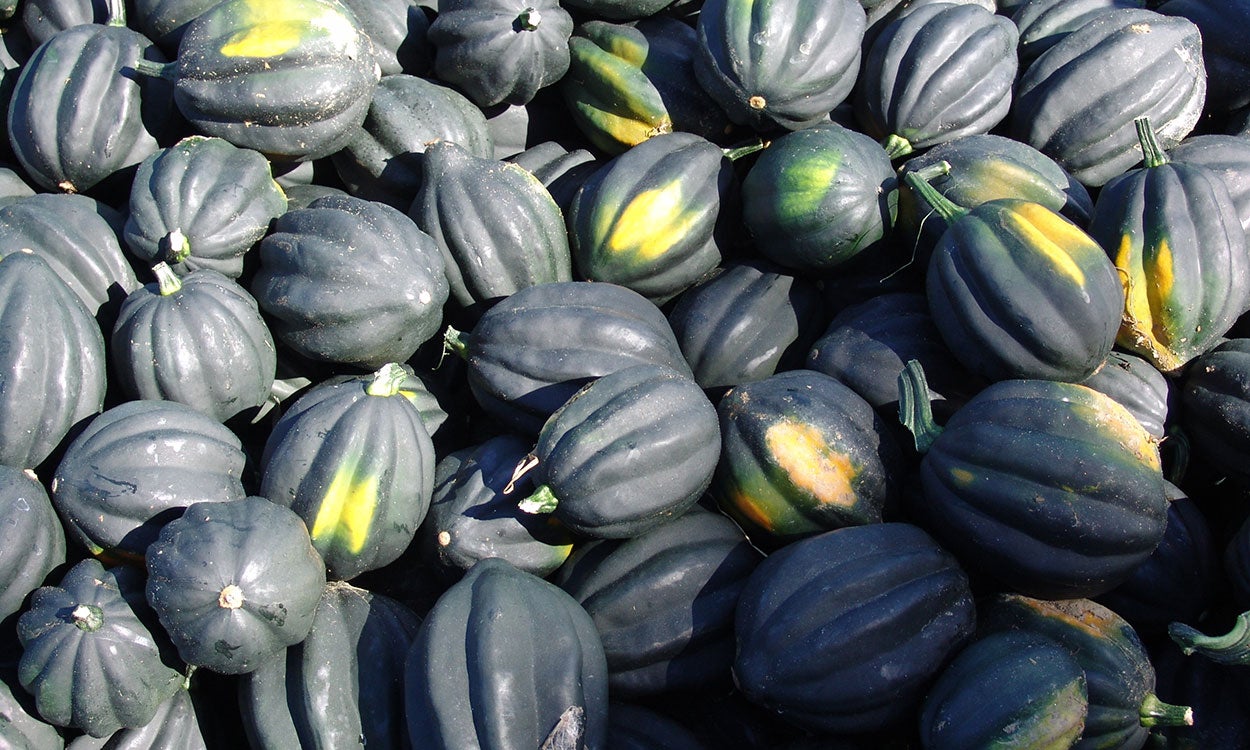
Kabocha
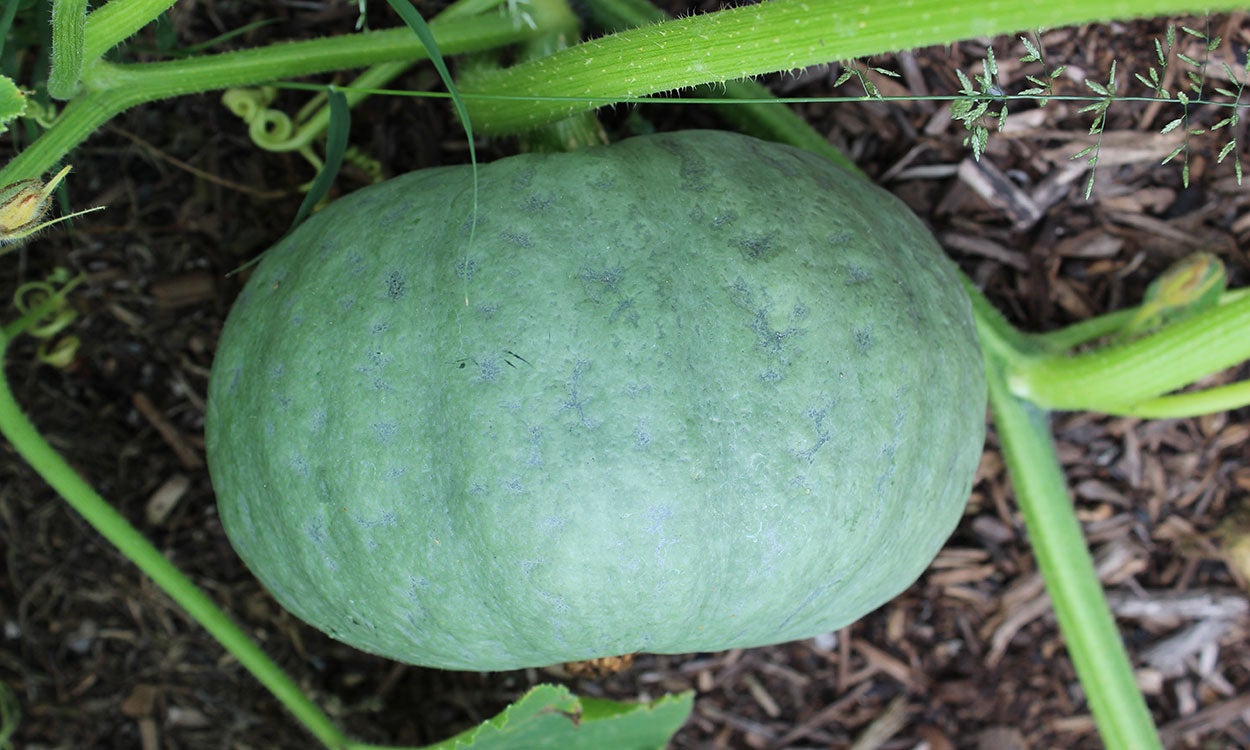
Butternut
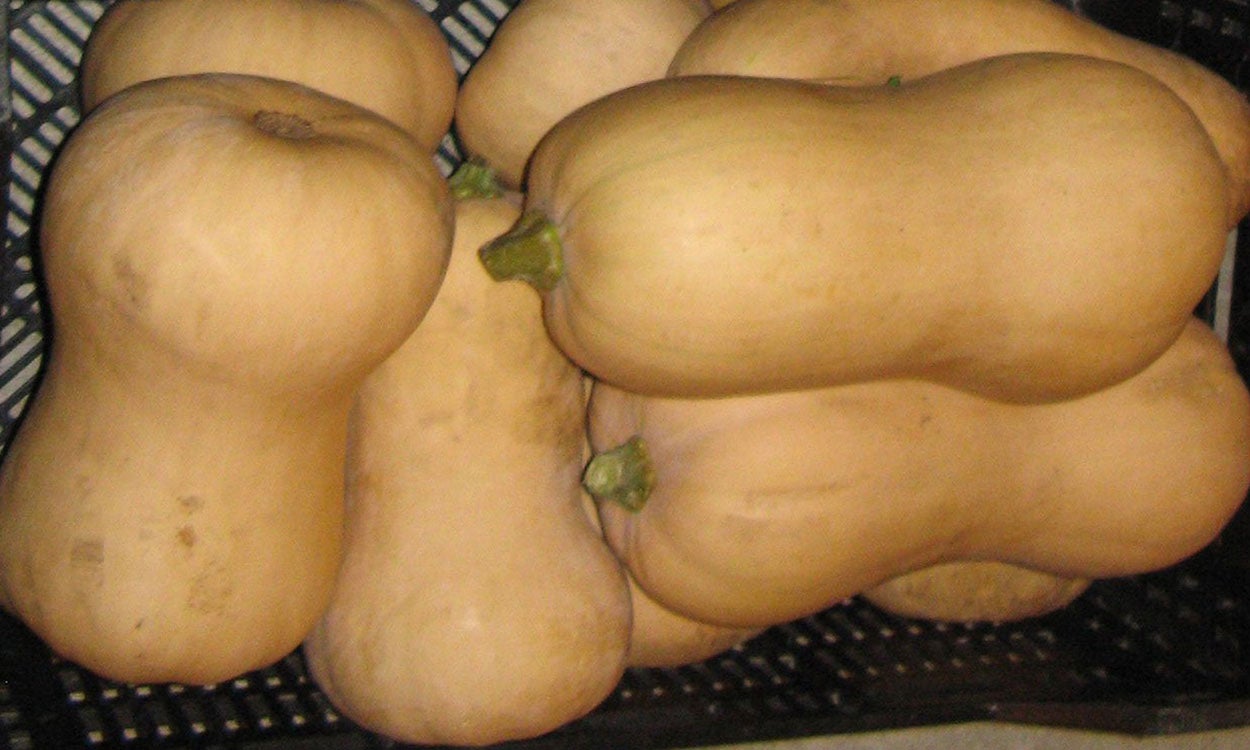
Other Considerations
- Use a knife or hand pruners to cut the stem from the vine, so that it stays with the fruit; this helps avoid stem-end rot. Use care in handling fruit, as any bruising or other physical damage will shorten shelf life.
- If you are still not certain when exactly to pick the fruit, don’t worry. Most winter squash types ripen quite a bit after harvest. Even green pumpkins eventually turn orange, although they will not store for long afterwards.
- In the weeks, and even months, after harvest, winter squash slowly convert starch to sugars, increasing their appeal to our taste buds.
-
In addition, some types increase their carotenoid pigment (pro-vitamin A) content during storage (becoming more orange), which increases their nutritional value over when they are first picked. So all may not be lost if your vines are killed by frost or disease before the rinds have hardened or the stem corked.
Storage Guidelines: Optimizing quality
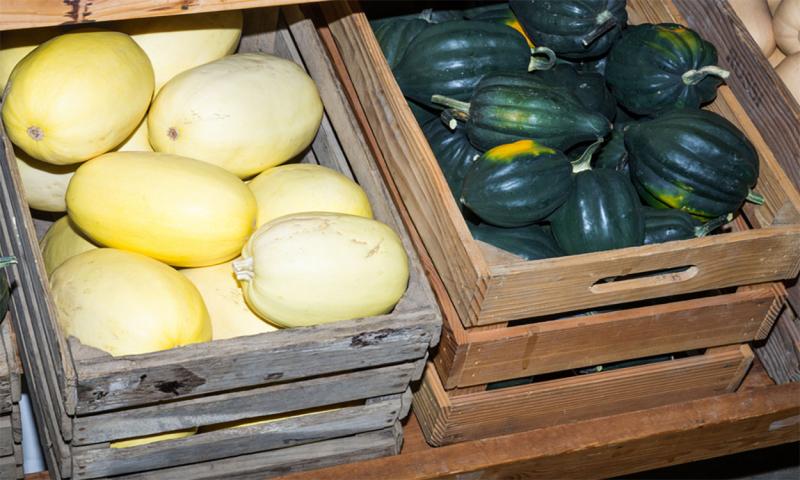
The following are some guidelines to optimize squash quality during storage:
- Sustained storage temperatures above 80 degrees Fahrenheit will reduce storage life and eating quality, but up to a week or two at these higher temperatures right after harvest can increase sugar content and perceived flavor considerably without decreasing storage life.
- Depending on the type of pumpkin or squash, it should last 2 to 6 months when stored at the ideal temperature of between 50 and 60 degrees Fahrenheit; a cool basement can work well. Under ideal storage conditions, acorn squash can last up to 2 months, butternuts 2-to-3 months, and hubbarbs 5 to 6 months.
- The fruit can withstand short exposures to cooler temperatures, even down to 35 degrees, as long as they are exposed to warmer temperatures (around room temperature) soon afterwards, which will help reverse some of the chilling injury.
- The fruit should be dry when placed into storage. The ideal relative humidity is 50 to 70%; with lower humidity, the fruit may shrink some, but higher can allow disease to invade the fruit.
- Eating quality may improve after storage, depending on type. Butternut squash generally reaches optimal quality after two months in storage. Acorn types, on the other hand, have a relatively short shelf life, and if harvested with the dark-orange ground spot, need no further ripening. Kabocha and buttercup varieties are intermediate, with sugar and carotenoid levels increasing with storage time. Hubbard-type squash can last up to six months in storage.
- Squash should not be stored near apples, ripe pears or tomatoes, as these produce ethylene (the ripening “hormone”) that will shorten shelf life.
While homeowners may not be able to achieve the optimal conditions, attention to proper harvest time, careful handling, and avoidance of overly high or low temperatures during storage should help prolong the storage life of their squash and pumpkins.


